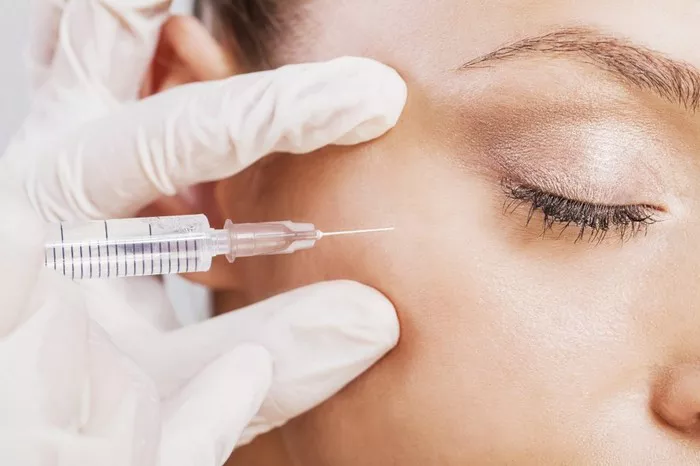As we age, our skin begins to lose elasticity and collagen, leading to the formation of wrinkles and fine lines. While there are many topical products available on the market that claim to reduce the appearance of wrinkles, injections can provide more immediate and noticeable results. In this article, we will explore the various types of injections that get rid of wrinkles.
Botox
Botox is one of the most well-known injectables for reducing wrinkles. It contains a purified form of botulinum toxin, which works by blocking nerve signals to the muscles that cause wrinkles. When injected into specific areas, such as the forehead, between the eyebrows, and around the eyes, Botox can smooth out wrinkles and prevent new ones from forming.
The effects of Botox typically last three to six months, after which time the treatment will need to be repeated. Botox injections are generally safe and have minimal side effects, which can include bruising, swelling, and mild headaches.
Dermal Fillers
Dermal fillers are another popular injectable for treating wrinkles. Unlike Botox, which relaxes the muscles causing wrinkles, dermal fillers add volume to the skin, filling in wrinkles and smoothing out fine lines. They can also be used to plump up thin lips and cheeks, as well as restore lost volume in the hands.
There are several types of dermal fillers available, each with their own unique properties and benefits. Hyaluronic acid (HA) fillers, such as Juvederm and Restylane, are the most commonly used and work by attracting moisture to the skin, improving hydration and plumping up the treated area. Other types of fillers, such as Sculptra and Radiesse, stimulate collagen production, providing longer-lasting results.
The effects of dermal fillers typically last anywhere from six months to two years, depending on the type of filler used and the area treated. Side effects can include bruising, swelling, and redness at the injection site, but these are usually mild and resolve within a few days.
Platelet-rich Plasma (PRP) Therapy
Platelet-rich plasma (PRP) therapy is a newer treatment option that uses your own blood to stimulate collagen production and improve skin texture and tone. During the procedure, a small amount of blood is drawn from your arm and spun in a centrifuge to separate the platelets from the rest of the blood.
The platelet-rich plasma is then injected into the areas of the face or body that need rejuvenation, such as around the eyes, mouth, and neck. The platelets release growth factors that promote collagen production, which leads to smoother, firmer, and more youthful-looking skin.
The effects of PRP therapy typically last up to two years, with maintenance treatments recommended every six to twelve months. Side effects are minimal, with some temporary swelling and redness at the injection site.
Micro-Needling
Micro-needling, also known as collagen induction therapy, is a minimally invasive procedure that involves using a device with tiny needles to create microscopic punctures in the skin. These micro-injuries trigger the body’s natural healing response and stimulate collagen production, resulting in smoother, more even-toned skin.
Micro-needling can be used to treat fine lines, wrinkles, acne scars, and hyperpigmentation. It can also be combined with other treatments, such as PRP therapy or topical serums, to enhance its effectiveness.
The effects of micro-needling typically last several months, with multiple treatments required for optimal results. Side effects can include redness, swelling, and minor bleeding, but these are usually mild and resolve quickly.
Laser Resurfacing
Laser resurfacing is a non-invasive treatment option that uses targeted laser energy to remove the outer layer of damaged skin, revealing smoother, more youthful-looking skin underneath. The procedure can be customized to target specific areas of the face or body, such as around the eyes, mouth, and forehead.
Laser resurfacing can also stimulate collagen production, leading to long-term improvements in skin texture and tone. The effects of laser resurfacing can last several years, with maintenance treatments recommended every few years for optimal results.
Side effects of laser resurfacing can include redness, swelling, and temporary discoloration of the skin. It is important to choose an experienced provider who can customize the treatment to your individual needs and minimize the risk of complications.
Conclusion
Injections are a safe and effective way to reduce the appearance of wrinkles and fine lines. Botox and dermal fillers are popular options that provide immediate results, while PRP therapy, micro-needling, and laser resurfacing offer longer-lasting benefits by stimulating collagen production and improving skin texture and tone.
If you are considering injections for wrinkle reduction, it is important to consult with an experienced provider who can recommend the best treatment option for your individual needs and goals. They can also answer any questions or concerns you may have about the procedure, expected results, and potential side effects.


